Image source: The Motley Fool.
Minerals Technologies Inc (NYSE:MTX)
Q1 2020 Earnings Call
May 1, 2020, 11:00 a.m. ET
Contents:
- Prepared Remarks
- Questions and Answers
- Call Participants
Prepared Remarks:
Operator
Good day, everyone, and welcome to the First Quarter 2020 Minerals Technologies Earnings Call.
At this time, I’d like to turn the call over to Matt Garth, Chief Financial Officer at Minerals Technologies. Please go ahead, Mr. Garth.
Matthew E. Garth — Senior Vice President, Finance and Treasury, and Chief Financial Officer
Thank you, David. Good morning, everyone, and welcome to our first quarter 2020 earnings conference call. Today’s call will be led by Chief Executive Officer, Doug Dietrich; and myself, Chief Financial Officer, Matt Garth. Following our prepared remarks, we will open it up to questions. I’d like to remind you that beginning on Page 15 of our 2019 10-K, we list the various risk factors and conditions that may affect our future results and also point out the safe harbor disclaimer on this slide. Statements related to future performance by members of our team are subject to these limitations, cautionary remarks and conditions.
Now I’ll turn the call over to Doug. Doug?
Douglas T. Dietrich — Chief Executive Officer
Thanks for the introduction, Matt, and good morning, everyone. I’d like to, first, express my thanks and concern to everyone on the call. I know you’re dealing with the recent challenges in your lives, and I appreciate you joining us today. As you can imagine, this call is being conducted a little differently than our regular earnings calls. Despite the current circumstances, we’re doing everything possible to make this a standard call as each of our business unit leaders is on with us and able to answer your questions. This time though, we’ll be doing the call from our home, so bear with us as we go through the remarks and answer your questions at the end. And while I’d normally begin by discussing our first quarter results, I’m going to start by outlining how COVID-19 is impacting our company and the actions we’re taking across our operations. I’ll then highlight our first quarter results. Matt will follow with more detail on our financial results and commentary on our capital structure and liquidity. I’ll wrap up my prepared remarks with insight on the current end market dynamics, the state of our operations and how we’re positioned to manage through this environment. MTI is a global company with more than 150 locations in 35 countries.
And we’ve been navigating through the realities of the COVID-19 outbreak since it was first reported in China in January. As we dealt with these issues in China, we developed plans to protect our employees, manage our worldwide operations and support our customers, including heightened virus-related safety protocols, such as sanitary procedures and social distancing, arrangements for remote working and contingencies for our global supply chains. The best practices that we developed early on in China helped inform the business continuity plans and safety and operating procedures that we’ve now implemented across the rest of the company. First and foremost, our focus has been and continues to be on the health and safety of our employees, consistent with MTI’s core values. We have teams in place at local, regional and global levels to ensure the safety of our people and the continuity of our operations while monitoring the status of each location and recommending specific risk mitigation actions. I’m in daily contact with our business leaders to gather the most current information on how COVID-19 is affecting our people and operations so that we can take actions to help them manage through any potential issues. Right now, our operations have not been affected by COVID-19-related illnesses.
Out of our employee base of approximately 3,600, we’ve had three confirmed cases. Each of these employees contracted the virus outside of the workplace and are doing well and have since recovered. Overall, nearly all of our global production facilities continue to operate as our products have been deemed essential for the markets we serve. As we run our facilities, we’ve put in place standardized COVID-19-related protocols across all of our global operations. In addition, wherever possible, our employees are working remotely, adapting to maintain our business process continuity. Now let me give you more detail on which of our facilities were impacted during the quarter and what we saw change toward the end of March. Out of 15 locations in China, our seven PCC plants remain fully operational with the exception of a short outage at one of them. The majority of the impact in China came in our Metalcasting business due to closures from foundry customers. In total, our one Refractory and two Metalcasting facilities were down for about four weeks. In March, these facilities started to reopen. And currently, all of our locations in China are fully operational. Additionally, while our facilities generally have been exempted from government-related mandates, locations in a few countries were impacted by these circumstances. Specifically, our eight locations in India and three sites in South Africa were temporarily closed during the last few weeks of March and part of April due to the government directives.
These sites are either now back in operation or will be coming online in the next week. A few other facilities, primarily Paper PCC satellites, were temporarily idled in March due to customer-driven outages related to the virus and have since returned to production. All told, the business disruption in China as well as closures in other parts of the world had a limited effect on our first quarter financial performance with sales impacted by $7 million and operating income by $2 million. With everything that we’ve had to overcome and adapt to in recent weeks and months, I’d like to recognize our employees for their efforts. Thanks to their unwavering focus and agility, our operations and business processes have not missed a beat. I credit our team for their engagement, their perseverance and their people-centered focus, all key attributes that define our culture and our company. Let me now move on to our first quarter results. Overall, we had a solid quarter, and our performance underscores the resiliency of our business through the diversification of our end markets and operations. It also reflects the benefit of the pricing and cost-saving actions we implemented last year as well as the ability of our team to execute well despite obstacles presented from the COVID-19 outbreak. From a financial perspective, total sales in the quarter were $418 million and we generated $58 million of operating income. Our earnings per share of $1.13 was above our guidance range and we also delivered $30 million in operating cash flow.
As we began the quarter, we expected similar market conditions to the fourth quarter with continued growth in many of our product lines, offset by slower conditions in others carrying over from 2019. And that’s largely how things played out, apart from having to navigate through COVID-19 market issues in China. To touch on some of the growth highlights, we experienced continued favorable trends in several of our markets, specifically in the consumer-oriented ones. Our pet care business continued its strong sales momentum from last year through our robust private label portfolio in North America and Europe. In addition, this business saw increased demand related to COVID-19 consumer spending dynamics. As an example, our order books for our European pet care business doubled in March, and we ran at maximum capacity to meet this high level of demand. Our personal care business also experienced similar conditions with growth driven by strong consumer demand. Other pockets of strength came in our Building Materials business, which was supported by higher activity in the construction market, and Energy Services continued its positive trajectory by capitalizing on increased service demand in the Gulf of Mexico. We also delivered sequential margin improvement in each of our businesses.
This performance demonstrates our continued focus on expanding margins through aggressive cost control, productivity improvements and pricing actions, all of which we’ve been implementing over the last year. I’d also like to provide some context around areas of COVID-19-related weakening demand that happened toward the end of the quarter. These dynamics didn’t have a noticeable impact on our first quarter results. But I thought it would be helpful to highlight a few of the trends because they will have a more pronounced effect on our results going forward. Areas where we saw slower sales late in the quarter came in product lines serving automotive, heavy truck and steel markets in North America and Europe. In addition, we started to experience some delays associated with large projects in our Environmental Products business. All in all, the first quarter was a solid one. But given the rapidly changing dynamics at the end of the quarter, we are prepared to navigate through more challenging conditions going forward. I’ll get into all of this in more detail when I take you through what we’re seeing across all of our product lines and end markets at the end of our prepared remarks.
But first, let me have Matt give you all the details on our first quarter results. Matt?
Matthew E. Garth — Senior Vice President, Finance and Treasury, and Chief Financial Officer
Thanks, Doug. I’ll now review our first quarter results, the performance of our four segments as well as our liquidity and debt highlights. Before moving to the results, I’d like to note that the current economic environment is evolving rapidly, and I will provide you with insight on the impact of COVID-19 on first quarter results. I will then turn the call back over to Doug for some additional perspectives on our current operating conditions and the market visibility we have going forward. For now, let’s review the first quarter results. As you can see on this slide, we are presenting the year-over-year comparisons of sales and operating income on the left-hand side and the sequential quarter comparisons on the right-hand side. Given the rapidly changing market conditions, we believe the sequential view adds an important perspective on our business performance in the first quarter. First quarter sales were $417.5 million, 5% lower than the prior year. The bridge on the top left of this slide shows the sales change by major driver. Unfavorable foreign exchange contributed $6 million of lower sales in the quarter or two percentage points. COVID-19 impacted sales by approximately $6.7 million, primarily due to weakness in China, and later in the quarter, in North America and Europe.
The remainder was due to the softer market conditions in Metalcasting and Refractories that persisted from the fourth quarter. I’ll note that while sales in China declined in January and February, driven by COVID-19-related shutdowns, it’s worth highlighting that overall sales in China grew 2% in the month of March versus the prior year. The year-over-year operating income bridge on the bottom left shows we were able to partially offset the impact of lower sales with favorable cost performance, primarily driven by the actions we have taken over the last year. In addition, our pricing actions continued, generating $3.7 million on a year-over-year basis in the quarter. We have completed our restructuring program from 2019, and we are realizing the savings in our cost performance. Moving to the right side of the slide. Sales were lower by 5% on a sequential basis. The first quarter had four fewer days versus the fourth quarter of 2019. And you can see in the bridge on the top right that this contributed to nearly $19 million of the sequential change. Again, you can see the impact of COVID-19 sequentially. And this was partially offset by continued growth in HPC as well as strength in Specialty PCC, Processed Minerals and Energy Services. Operating income increased 10% sequentially as we benefited from slightly higher volumes as well as continued pricing actions and a favorable mix. Our overall cost performance was favorable due to ongoing cost control efforts and favorable input costs.
Adjusting for the number of days in the period, operating income was up 15%, including the negative impact we absorbed from COVID-19 shutdowns. Operating margin of 14% in the quarter was relatively flat versus the prior year and up 200 basis points sequentially. Now let’s look at our quarterly EPS trend. First quarter earnings per share excluding special items were $1.13, 2% higher than the prior year and 19% higher sequentially. Despite the COVID-19 impacts, our segments performed better than expected. And this performance drove the improved earnings sequentially. In addition, our EPS benefited from favorable foreign exchange gains. Our effective tax rate was 20% in the first quarter versus 18.9% in the prior year and 17.6% in the fourth quarter of 2019. Let’s now review the segments in more detail, starting with Performance Materials. Performance Materials sales were 7% lower than the prior year, primarily driven by Metalcasting, including the impact of COVID-19. This was partially offset by strength in Building Materials. Sequentially, sales were 8% lower and only 3% on a same-days basis. This was primarily due to the shutdowns in January and February in China. In North America, Metalcasting market conditions remained similar to the fourth quarter. HPC demand remained stable throughout the quarter as we saw strong ordering for consumer-oriented products like pet care, fabric care, personal care and edible oil purification. Operating income for the segment was $24.1 million and represented 12.9% of sales.
Operating margin increased 140 basis points sequentially, primarily driven by continued pricing and cost control measures. COVID-19 impacted sales in this segment by $5.7 million in the quarter or three percentage points, primarily in Metalcasting, driven by foundry closures in China as well as a slowdown in North America late in the quarter. The slowdown in North America occurred as automotive manufacturers began announcing downtime in response to weaker demand and was continued into April. Building Materials and Environmental Products, both project-based businesses, started to experience delays in projects related to COVID-19 later in the quarter in North America and Europe. However, our consumer-oriented products have continued to perform well. Now let’s move to Specialty Minerals. Sales for this segment were 5% lower than the prior year, primarily due to the previously announced customer paper machine shutdowns in North America in 2019. Paper PCC sales in Asia grew 4%, driven by 8% growth in China as well as continued growth from our Indonesia expansion, which came online last year. On a sequential basis, sales were 3% lower and increased 1% on a same-days basis. The growth was driven by 14% higher Specialty PCC sales and 10% higher Processed Minerals sales on a same-days basis. Sequentially, segment operating income increased 5% to $20.3 million and represented 14.8% of sales.
The increase was due to higher volumes of SPCC and Processed Minerals, continued higher pricing and strong cost control. COVID-19 had a limited financial impact on this segment in the first quarter. However, we did experience COVID-19-related shutdowns in paper mills late in the first quarter in Europe, South Africa and India. These shutdowns continued through most of April. SPCC and Processed Minerals sales were also impacted late in the quarter due to a slowdown in residential construction and transportation end markets in both North America and Europe. And meanwhile, the 250,000 tons of new PCC capacity we are bringing online this year in Asia and Europe remain on track. Now let’s turn to the Refractories segment. Refractories segment sales decreased 7% versus the prior year due to lower demand from steel mills in the United States, lower laser equipment sales and the impact of foreign exchange. This was offset by higher sales of metallurgical products. Sequentially, sales were 6% lower or 2% on a same-days basis. Sales were better than we had expected due to the delayed maintenance shutdowns at some customer facilities, primarily in the United States. We expected to see furnace relines that did not occur in the quarter. And this led to higher demand for refractory products. Segment operating income increased 8% sequentially to $11.2 million and represented 16.2% of sales. The impact of COVID-19 was limited for this segment in the first quarter.
Two laser equipment sales were moved out from the first quarter in China but delayed lasers were offset by some steel customers who pulled forward orders to build inventory in Europe and North America. Now let’s turn to Energy Services. Energy Services had another solid quarter. Segment sales rose 24% versus the prior year and 7% sequentially. The increased sales were driven by higher well testing activity in the Gulf of Mexico and increased international sales. Operating income increased 28% sequentially to $3.2 million and represented 12.7% of sales. The impact of COVID-19 was not material in this segment in the first quarter, although we did experience some delays in projects in Malaysia and the United Kingdom and one of our customers chose to demobilize an offshore platform in the Gulf of Mexico earlier than scheduled. With that review of the segments, let’s now turn to our cash flow and liquidity. As Doug mentioned, we generated $30 million of cash from operations in the first quarter and $14 million of free cash flow. And this was up slightly from last year. We repurchased $23 million of shares in the first quarter, bringing the total to $43 million under our current program. Our net leverage ratio stands at 2.2 times EBITDA. In times like these, we are taking a close look at our liquidity, cash flow and debt obligations. I can tell you from the multiple scenarios we have been analyzing that the company is in a strong financial position.
I’d like to highlight a few key messages around this. First, the company has $418 million of liquidity, including $218 million of cash. As you know from our discussions around markets and products, we have a geographically and industrially diverse set of businesses. And this diversity provides balance for consistent cash flow generation. In addition, we have many levers to maintain cash flow through an economic downturn. Second, we have a broad and diverse accounts receivable profile without significant customer concentration. We monitor changes in customer credit risk on a daily basis, and we will continue to do so as the economic impact of COVID-19 continues to evolve. And last, we have manageable near-term debt maturities. Our liquidity position, combined with our ability to continue to generate cash, gives us confidence with respect to meeting our upcoming obligations. We continue to maintain a balanced approach for the use of our free cash flow. At this point in time, we are prioritizing debt reduction and capital for our facilities. We are looking at our capital spend closely to minimize expenditures this year. While we do not have an immediate need to refinance our debt structure, we are looking at ways to take advantage of favorable interest rates, given our strong credit position. All in all, we are well positioned to navigate what lies ahead.
Now let me turn it back over to Doug to discuss our current end market conditions. Doug?
Douglas T. Dietrich — Chief Executive Officer
Thanks, Matt. I wanted to take some time before moving to questions to provide an update on the current state of our operations, our end market conditions and what we can see from where we sit today. As you can imagine, with the COVID-19 pandemic constantly evolving and the duration and broad-based impact hard to predict, our forward visibility is limited at best and the information we do have is changing regularly. For reference, customers have told us they would be taking outages for three weeks or when they come back online in a week or it’s gone in the other direction. And we’re prepared to adjust to the government directives for plant reopenings and that could alter our current operating conditions and plans. With that overview, I felt the best way to organize this discussion would be by taking you through each of our four segments. I’ll start with the Performance Materials, which is our largest and most diverse segment with a presence in a broad range of end markets, including consumer, transportation, environmental, construction and agriculture. Our household and personal care product line, which serves consumer-oriented markets, has continued to run at strong demand levels with similar growth rates to what we’ve been delivering in recent quarters.
As you know, this is a business that serves markets with stable long-term growth potential, and we’ve invested in building unique capabilities, resources and value-added products to serve our customers. Our order books continue to be full in North America and Europe for many of our products, including pet care, fabric care, personal care and edible oil purification, extending the momentum from the first quarter. While some of the sharp uptick in demand we saw in March has tempered slightly, demand levels through April remained very strong. As I mentioned earlier in my remarks, we are seeing the most pronounced impact from COVID-19 conditions in our Metalcasting business. Production curtailments in the automotive and heavy truck sectors in North America, which began at the end of March, became more noticeable in April as our foundry customers started to take downtime and reduced shifts to adjust to the lower demand. For context, in April, our Metalcasting facilities in North America operated at about 60% of normal demand levels. Based on the latest indications from our foundry customers, we expect these rates to improve to 80% to 90% in June. However, it’s still a bit uncertain as to how this trajectory might unfold. In China, Metalcasting volumes were strong at March and grew 4% over last year, driven by our tailored greensand bond products. And we expect this trend to continue through the quarter. After a strong first quarter in our Building Materials business, the timing of ongoing shipments for our active projects is moving around. At this point, it’s difficult to predict how much of our active order book will be completed in the second or move to the third quarter.
Our pipeline of future projects is robust. But we do see the potential for some delays relating to softening construction market conditions in North America and Europe. And in Environmental Products, we continue to advance our high-value portfolio of specialized technologies, which has enabled us to secure more complex remediation projects. Some of this momentum has been impacted by more challenging conditions as several large projects were pushed out of April, likely into the back half of the year. Now let me turn to our Specialty Minerals segment. This segment’s revenue is driven by paper and packaging as well as construction, automotive and food and pharmaceutical end markets. I’ll start with Paper PCC and our operations in Asia. As I mentioned earlier, all of our facilities in China continue to operate and are running at near-normal production levels. Our six PCC facilities in India that were closed in March due to government mandates are currently back in operation or they plan to be within the next week. Our facilities elsewhere in Asia have been operating at normal levels. In total, we expect our volumes in Asia for the second quarter to be similar to the first quarter. Regarding North America and Europe, the second quarter is typically when paper producers in these regions take seasonal maintenance outages, and we’re seeing some facilities extend these outages for several additional weeks. As a result, our second quarter volumes in North America and Europe could be around 10% lower than the first.
Again, this outlook may move around as we’ve already experienced facilities come back online sooner or take further outages. The construction of our new satellites and expansions, totaling 250,000 tons of capacity, continue to move forward. One of these satellites in India is now complete and the remainder are on track to come online this year. From a business development standpoint, our pipeline of new filler and packaging opportunities as well as for our latest technologies is intact. And our discussions with customers continue to advance. In our Specialty PCC business, sales for our pharmaceutical and food and beverage products have been strong. But our products that go into automotive sealants have been impacted by lower build rates in North America and Europe. Sales in our Processed Minerals product lines, which serves primarily construction and automotive markets, have seen a mixed impact so far. There have been areas of strength and weakness in both our ground calcium carbonate and talc product line. Now let me move on to the Refractories segment. Following a stronger-than-expected first quarter, we are now experiencing customer production curtailments. North America steel capacity utilization rates have declined from 77% in the first quarter to 56% currently, with European utilization rates at similar levels.
Our refractory sales typically follow these utilization rates. However, in times like these, furnaces that are running usually run longer and harder and consume more refractory material, so these rates are not a direct correlation on our sales. While we continue to have a strong full year order book for our Ferrotron lasers, some of these are likely to be delayed from the second quarter into the back half of the year. I’ll now finish this segment review with Energy Services. While the energy market has gone through significant volatility recently, our service order book for offshore projects remains largely intact. We are seeing some impact from COVID-19 resulting in early demobilization for virus-related issues as well as projects being shifted out of the second quarter. I’ll remind everyone that this business operates solely offshore, so the price of oil takes longer to change the demand level for our services there. Energy Services is a small piece of our portfolio and profitability. And therefore, we expect these dynamics to have a limited impact on our financials. As I just described for you, we’re dealing with several evolving market dynamics, which have many puts and takes. And all of this contributes to a lack of clear visibility going forward. But I wanted to provide you with as much detail as I can at this point.
The latest information I can give you is that these operating conditions in April have led to a sales trend that is approximately 10% lower than what we experienced during the first quarter. Looking at the remainder of the quarter. There are aspects of our outlook where we expect to see some improvement to this current sales rate but also other areas where there is more uncertainty, given how fluid the environment has been. We are working through the evolving challenges of today while also keeping our focus on our values, our longer-term goals and strategies, which includes taking measures to strengthen our foundation and the long-term health of our company. The underlying fundamentals of our business are intact, and we remain committed to our long-term growth strategy. Our business model, along with our cash generation, is resilient, supported by diversity in geographies, customers and markets. We are confident that our team’s experience and agility, disciplined execution, cost management focus and strong balance sheet position us to navigate through this period of uncertainty. Our team has effectively managed challenging times in the past, and we will make the necessary adjustments to align our business to market conditions as they evolve.
With that, let’s turn the call over to questions.
Questions and Answers:
Operator
[Operator Instructions] We’ll take our first question from Daniel Moore with CJS Securities.
Daniel Moore — CJS Securities — Analyst
Doug, Matt. Good morning, thanks for taking the questions. Hopefully can hear me. Hopefully, are all well and safe at home
Douglas T. Dietrich — Chief Executive Officer
Thanks, Dan. We can hear you.
Daniel Moore — CJS Securities — Analyst
To start with the PCC, been down 10% sequentially. Thank you for the color. Do you do we see that likely continuing through the majority of Q2? And do you expect do you see at this stage any shifts or changes in paper usage in North America or Europe as a result of COVID, potentially leading to more capacity closures later in the year?
Douglas T. Dietrich — Chief Executive Officer
Yes. Let me start that off. The 10% was for North America and Europe. And that’s largely where we’re seeing a number of the kind of extended curtailments or extended outages for maintenance reasons. And some of those typically, I think, we see two weeks in Europe at this time of the year and in North America, and some of those outages have been extended to four, a couple have been longer, a couple might be shorter. We expect that 10% to be kind of that rate throughout the quarter in those two regions. Offsetting that, our demand in Asia has remained largely intact. We’re running at pretty much close to normal demand levels throughout our Asia businesses, China. And now that India is back up, we expect them to run at that level as well. And regarding kind of demand trends, yes, we’ve absolutely seen some we’ll see some demand trends. D.J. has been really close to kind of the customers and his team. So why don’t I let D.J. give you a little bit of color on what we’re seeing in both North America and Europe demand trends? D.J., are you there?
D.J. Monagle, III — Group President, Specialty Minerals and Refractories.
Yes, I am Doug. Thanks, and thanks for the question, Dan. Look, Dan, as far as the flavor I can give you regarding what we’re seeing in this quarter is probably the best I can do, and we’ll talk a little bit about what we see going on to the next. But the outages that we’re seeing in the what Doug was referring to, were taken by some industry leaders with some pretty big machines. So in Europe, Navigator has been public on taking several of their machines out. One of those is associated with our product. In North America, it was Domtar and PCA Jackson. So they took out some pretty big outages, which I think sent us the proper signal to the rest of the market that they’re making the adjustment for them in this quarter. Also helping North America in terms of the long-term stability of the market is and we have been affirming International Paper’s plans to shut down the machine in Selma, Alabama at the Riverdale complex. So those tons had already been planned to come out and convert to a packaging operation. So Doug’s projection of this quarter is we think going to hold for the quarter. It’s hard to say how that third quarter looks until we really start seeing how habits or practices have changed. I know that the industry is affected by school consumption, office consumption and in-mail advertising, which all are that consumption is all down in this quarter. So it’s a matter of how quick that consumption will come back. Hopefully, that provides you the color.
Daniel Moore — CJS Securities — Analyst
It certainly does. Absolutely.
Douglas T. Dietrich — Chief Executive Officer
The only thing I’d add is, yes, I think with demand levels, what we look at is operating rates. And so now I think operating rates are in the 90s. They’ve moved down to 85%. We’ll have to take a look at where they are through the quarter and how they rebound or not in the third quarter. I think as they get lower in the 80s, you do have the you have the potential for a closure. But I think we always have that. And so we’ll continue to watch it. Right now, like I said, we can see kind of our estimate through the second. We’ll give you more color after that for the third.
Daniel Moore — CJS Securities — Analyst
Perfect. One of the certain bright spots, continuing bright spots is household and personal, saw a nice uptick in March, certainly. Any estimate, gut feeling as to how much of that is sort of stocking up and one-time in nature versus a maybe more sustainable uptick?
Douglas T. Dietrich — Chief Executive Officer
We certainly saw a real sharp uptick in March, kind of the beginning of March. And we think some of that was probably pulling forward largely in our pet care business. Fabric care has been a little bit steadier. So some of that pet care was probably pulling forward, and we’ve noticed that those I mentioned, our order books in March in Europe kind of doubled. The pull was tremendous and we ran flat out and we still are filling those books filling those orders. Some of that has come off a bit so that indicates that, that’s been buying forward. But I have to tell you, through April, we’ve continued to run at very strong levels. Certainly, at that kind of rates, we were delivering plus from last year. So we’ll see. But through April, and we see remaining going through the quarter, both North America and Europe pet care business remaining at very strong levels.
Daniel Moore — CJS Securities — Analyst
Helpful. And just shifting gears, Environmental Products and Building Materials kind of separately, maybe just talk about the conversations with customers, projects being delayed. Any talks of cancellations at this point? Do you feel pretty confident that it’s more likely just being pushed out into the right?
Douglas T. Dietrich — Chief Executive Officer
It’s a little hard to see right now. What I will do is, Jon, why don’t you give a little color on the projects and kind of some of the movement around in this quarter and then where we see things probably pushing up until later in the year?
Jonathan J. Hastings — Group President, Performance Materials
Okay. Thanks, Doug and Dan, appreciate the question. Both environmental and building, as you know, are affected because they are a project-based business. And what we’re seeing is that our pipelines are remaining intact. The number of projects that we have in the pipelines and the number of projects that we intend to complete in a quarter are fairly consistent. But what we’re dealing with is, especially as we got into the latter part of Q1 and now into Q2, we do see some work site shutdowns. We’ve got some delays of some project starts, and we’re also starting to see some projects being put into question as far as timing from a funding perspective. All of that, basically, for both segments, all what that means is that what we’re seeing are delays. And it’s really like Doug said, it’s hard to really predict right now because what we see is these projects get delayed. But then all of a sudden, they start up or the orders come in and they want them delivered relatively quickly. So it’s pretty volatile. We do see, going forward in the quarter, most likely some of those delays and shifting into the latter part of the year, the second half of the year. But again, we’re watching this closely and we’re nimble enough that we can supply as needed. So probably some delays that will impact Q2, but the pipeline stays intact.
Daniel Moore — CJS Securities — Analyst
Very helpful. And lastly for me. You took some pretty significant cost reduction actions last year. Given the onset of COVID, any additional restructuring or cost mitigation initiatives that you’re considering? And any areas of the business that you would you’re sort of monitoring that could warrant some more permanent cost reductions? Thank you for the color. And certainly, I should have said it, but nice job managing through in the Q1 in a tough environment.
Douglas T. Dietrich — Chief Executive Officer
Thanks, Dan. Sure. You know us, we will we’ll be prudent with managing discretionary expenses, pulling the levers that we need in terms of working capital expenditures being prudent where we spend our money. We’ll do all of those things. I do want to say that I want to make sure look, we’ve got a fantastic team in this company, a tremendous employee base engaged, seasoned. And I really want to make sure that I look through short-term issues to make sure that the long-term health of this company is safe. So I do think there might be some areas, Dan, that we’ll have to make some adjustments based on structural changes that are long term. We’ll be prepared with that. But I want to also make sure that this company comes through this with our team ready to take on challenges for growth that will resume once we’re through it. So we’ll make our decisions, and we’ll make sure we balance short term with long term here.
Daniel Moore — CJS Securities — Analyst
Good. That’s it for me. Appreciate the color.
Operator
And next, we’ll go to Silke Kueck with JPMorgan.
Silke Kueck — JPMorgan — Analyst
Good morning, how are you. Hi, I have a couple of questions, if I may. Is the $6.7 million headwind to sales from the COVID outages, is that a net number? Does that include the outages? And is that like net of the prebuying and stocking that you may have seen on the household care side and maybe some of the pull-forward with the refractories? Or is it just defined to the outages that you saw?
Douglas T. Dietrich — Chief Executive Officer
Matt, you want to go ahead and explain how we designed that?
Matthew E. Garth — Senior Vice President, Finance and Treasury, and Chief Financial Officer
Absolutely. So Silke, that is the impact of COVID-19 on the reduction in sales that is not net. You would have seen higher sales being generated across the other product lines that we spoke about. In particular, as we talked in Refractories, where we did have some type of COVID impact from lasers being moved out, you did see have an offset in that the some refractories will pull forward. But the net downs would have been in that $6.7 million. And again, I don’t know that we’ve mentioned it, but let me give you a little more color. The majority of that impact, that $6.7 million, is coming from the China shutdowns that occurred impacting the Metalcasting business. The rest of it is what we saw from the shutdown that started to take place at the end of the quarter in North America.
Silke Kueck — JPMorgan — Analyst
Okay. That’s helpful. And if you had to guess, like if you look at your household care products, do you think the results would have been positive excluding of prebuying? Like it’s hard for us to tell. I don’t know if you can tell. But I was just wondering if you can quantify the benefit? And I was also wondering how long your lead times are like specifically for items that you sell that are related to like pet litter and fabric care and personal care, that what we hear from some of the consumer companies is that they can’t really tell yet what will happen in May. And the like the sales trends, if you just look at Nielsen data, looks like that. March was really strong, the beginning of April and then things really began to slow down for some things like fabric care in the middle of April. And the consumer companies that we serve, it takes us a while to see what will happen on the reorder side. And we can’t quite tell yet what will happen in May. So I was wondering whether you have a view, like you might, you might not have. But I’m just curious.
Douglas T. Dietrich — Chief Executive Officer
Well, Silke, let me try that one first. I guess what I’m not going to do is guess. So what we let me give you a perspective. In the past several quarters, our business has been the pet care business has been growing at about 3% to 4%, I think it is. I think some quarters have been 2%. But it’s been in that kind of steady 2% to 4% growth rate. And I think this quarter, we saw 6%. So I think we did see I think there’s that underlying trend of growth that’s still there in that business, and that’s been over the past several quarters in pet care. So I think you’re seeing that continue. And that’s just due just fundamentals of cat ownership and people using and moving to clumping cat litter and switching to premium products like we have in Europe. So that’s, that baseline. I do think there’s been some prebuying, and I think that absolutely in March that helped probably a couple of percent maybe that increase. But then I have to say, when we look at our order books into April, they’ve probably come off of that the doubling of order books, I can say they’re seeing double right now in Europe. But as we move through that backlog of orders that could, like you said, in May, shift things a little bit further down May and June. Right now through April, we’re still running at very strong levels.
I would suppose that we probably won’t maintain that 6% rate throughout the quarter, and some of that might back off to more of our normalized rates of 4%. So we’ll see that probably later in the quarter. I can’t see it right now, to be honest with you. Our lead times are pretty instantaneous, where we’re able to except for in March now in Europe, we’re able to take in an order and turn it relatively quickly. We have stock on hand of most of our raw materials that we’re able to get it out as fast as we can get trucks. So lead times and turnaround are pretty quick. A little bit longer in March, but those will be coming in. And we’ll have a better feel for May and June as we get through this month. So hopefully, that gives you some color. I guess I can’t tell you what those order books are going to be. But I would expect them to come in a little bit, given the preordering that we saw in March and the strong sales in April but back to our normal trend rate of probably 4%.
Silke Kueck — JPMorgan — Analyst
That’s very helpful. And if I can ask last set of questions on cash flow and bad debt expense. I was wondering whether you took any additional bad debt reserves in the quarter and whether you can quantify it. And I was also wondering whether you have a revised capex target or free cash flow target for the year.
Matthew E. Garth — Senior Vice President, Finance and Treasury, and Chief Financial Officer
Sure. Thanks, Silke. So Silke, let’s address what’s taking place on the receivable side. I think during my prepared remarks, you heard me outline the fact that we have a daily program in place, that extends obviously throughout all circumstances. But right now, it’s very important to monitor what’s taking place from a receipt perspective and, by the way, on a payments perspective across the company. And so in that process, we’re tracking customer conversations and customer payments on a daily basis. And we have yet to see really any type of change in our delinquency pattern. We continue to maintain a very good payment practice and again, not yet seeing any type of deficiencies or delinquencies in the payments. The cash flow for the company, like we said, remains in that position of generating slightly higher than what we did in the first quarter of last year. If we were to look out through the second quarter, what we would tell you is that it’s probably good to think that we could repeat the free cash flow performance that we had in the first quarter, maybe even a little bit better as
We get some working capital release. But going out beyond that, obviously, we’re going to wait to see what happens with some of the changes in the markets. Saying that, we have taken a look historically over many different circumstances. And just to highlight for everyone on the call to again remind you that even during the 2008/2009 time frame, the company delivered very strong free cash flow relative to what was taking place on the top line. And so the company can and will continue to generate good levels of free cash flow. From a capex perspective, I think you heard me say it as well in our prepared remarks, we are pruning that back a bit. I think we came into the year telling you that again it would be about that $70 million to $80 million level of spend split fairly evenly between the sustaining projects and growth projects. Right now, we’re looking more in the $55 million to $60 million range, pulling down some of the spend and prioritizing, again, investment in the facilities, maintaining the sustaining capex there, the necessary EHS spend while also continuing to pursue, as Doug said, the growth capability of the company.
Silke Kueck — JPMorgan — Analyst
Thanks for that. I’ll get back into queue.
Operator
And next, we’ll go to Rosemarie Morbelli with G.research.
Rosemarie Morbelli — G.research — Analyst
Thank you and good morning everyone. I was wondering if you or maybe D.J. could touch about on the paper side, whether you are in this environment, if customers are taking advantage of the slowdown and increasing the number of trials regarding using FulFill packaging products, your reuse of fibers in the waste systems and so on. Or has everybody everything kind of shut down in that particular end?
Douglas T. Dietrich — Chief Executive Officer
No. We haven’t seen that shutdown. But let me D.J., do you want to take that one and give a kind of purview or some color on the activity that you’re seeing right now?
D.J. Monagle, III — Group President, Specialty Minerals and Refractories.
Glad to. So Rosemarie, we had a terrific first quarter in this regard. Really, really happy to see the progress on the pipeline. I always speak to that pipeline and about 12 very active activities. We at any one time, it maybe 15 to 20 different conversations. But if we look at those activities, this first quarter saw us running pretty significant full-scale commercial trials of new yield at two locations. One of those is a packaging manufacturer, one of those are printing and writing manufacturer. And they were good trials. So we’re trying to figure out when the next time is we can demonstrate the value. We had advanced significantly conversations with a major European papermaker regarding Envirofil, now that they’ve seen the success of our first Envirofil launch that happened last year in Germany. And then we also have quite a bit of interest and pull from our standard PCC products, printing and writing grades. And those are primarily in Asia. So great pull, terrific first quarter, lots of trial activity. I would say that the customer interest is not diminished at all in this process. We’re a little bit challenged right now with actually having people, our experts, travel to a given location to properly run those trials. So I would say that this, we’ve got a little bit of a, I’ll call it, a hiccup that is slowing down what started off to be a blazing rate in the first quarter regarding progress with that pipeline. But now we’re just trying to reassess when we can run these extended trials and close out some commercial agreements. But that’s in the confines of travel restrictions and less about the broader commercial activity. I hope that helps.
Rosemarie Morbelli — G.research — Analyst
Yes. It does. So this is not something that you can do virtually? [Indecipherable] the equipment?
D.J. Monagle, III — Group President, Specialty Minerals and Refractories.
Certainly not the full-scale commercial trials. It’s a matter of equipment, and we’ve got some world-class experts that can work with the papermakers to show maximum value on that paper machine. The other the standard PCC opportunities, we are able to make some progress virtually. And so I’m optimistic that we can still have a couple of new PCC contracts signed in the coming months. But so we’re on this traditional product, we are. But on these new highly advanced products, it takes some regional expertise or global experts rather, going into these regions to demonstrate the value fully.
Douglas T. Dietrich — Chief Executive Officer
Sorry, Rosemarie. I was just going to add, I think that kind of our product development, our new business development, as you know, most of these products kind of are cost savings opportunities for our customers and they’re displacing something that’s currently existing. So you saw that in March. As China kind of reopened in March, we saw a 4% volume growth in our Metalcasting business. And that was largely driven by the greensand bond products, that blended engineered product that kind of helps with quality and productivity and cost savings. And so filler, for PCC Filler, our new yield products, all of these have that same aspect. They’re displacing something that’s currently being used and they save money. And so we think that the pull for our products, yes, there might be some challenges in terms of travel temporarily. But we think the pull for our products, both in strong demand times and weaker economic conditions, is solid and intact. So I thought I’d add that.
Rosemarie Morbelli — G.research — Analyst
And that brings me to Metalcasting. The growth that you are seeing, is it mostly substitution and obviously reopened foundries? Or is it linked to actually an increase in the number of trucks and autos being manufactured in China, let’s call it, for the domestic market at the moment as opposed to exports?
Douglas T. Dietrich — Chief Executive Officer
Yes. I’ll start and then maybe, Jon, you can give some color, right? It’s both. I would tell you that in current demand environments, it’s probably more substitution. So our penetration of our Metalcasting products in Asia, China, India right now, given the growth environment, is more substitution. And that’s, that demonstration of that cost savings value proposition and higher-quality foundry operation that we can offer. In the past, when back in, I guess, normal growth percentages in China and India, it was both, we were expanding our products through new foundries, into deeper into the foundry and then converting from other products. I don’t know, Jon, maybe I just stole that. But do you want to add anything to that?
Jonathan J. Hastings — Group President, Performance Materials
No, you’re absolutely right, Doug. Just a couple of things to add to that. Yes, we continue to see the substitution. And that’s really what’s helping us fairly significantly here in March and April as that market rebounds. I will say that the team has stayed very agile from a production perspective, cost perspective. They’re very innovative. And it’s times like these where we’re demonstrating our value to the foundries. And they’re looking to take costs out where they can and stay very productive. So our value has been recognized certainly by the customers that we have and some new customers as we continue to expand. You did mention for China, for example, a lot of domestic consumption. We see the rebound primarily in domestic consumption. We’re watching the exports because those exports do go to both Europe and North America, especially for auto. But so far, what we’ve seen is a very robust rebound from a very dramatic decline that happened in the February time frame. But like I said, the value proposition, the innovation, the interaction that we have with the customers, even working remotely, we’ve done a really good job. That team has done a great job in maintaining those customer relationships. And it gives us the opportunities to grow where we can.
Rosemarie Morbelli — G.research — Analyst
Very helpful. And then lastly, if I may, on the M&A front, I mean, I do realize that now the name of the game is cash conservation. But are you seeing additional properties potentially coming into the market, given the current environment and potentially issues with those properties that you were hoping that would come up for sale at a lower price?
Douglas T. Dietrich — Chief Executive Officer
No, I can’t say that we’ve well, our focus has been obviously over the past quarter managing through this. And as you mentioned, ensuring the continued operations, safe operations and focusing on our cash flows. That said, I think the expectations of buyers and sellers widened out quite a bit right now, given where we are until things become a lot clearer. I’ll also say that right now, until we see a little bit more certainty out there that we’re not looking to do anything major. But we do have and we’ve always said we’ve had a nice kind of portfolio of things that we think fit very well in the company. That said, there are some small things out there that we’ve been looking at and continue to work through. That could be small things with cash on hand in the region that can be accretive very quickly to both earnings and cash. And those things are still opportunities for us even in these periods. But I won’t say that we’re going to go too far right now until we see a lot greater visibility to how this economy, how things are playing out. So there are opportunities still, Rosemarie, but we’ll probably keep things small, very accretive quickly if we did anything. Does that help?
Rosemarie Morbelli — G.research — Analyst
Yes, it does. Thank you.
Operator
For our next question, next, we’ll go to David Silver with CL King.
David Silver — CL King — Analyst
Yes, Hi. So I’m just going to let you know, my phone connection is very poor, unfortunately. And my computer, the webcast is better, and I’m switching between one and the other, but there might be a delay just as I listen to your answers on a delayed basis. So thank you. But I had a few questions. The first thing I was hoping you could comment on or probably add some color to was pricing power. So I think in Doug’s prepared remarks, you cited selected areas where there is pricing power. And I was wondering if you could highlight them and in particular, if you could maybe characterize whether it’s the classic demand outstripping supply or whether it’s due to something, maybe a disruption at an alternate supplier or you mentioned some prebuying. So the pockets of pricing power, if you could maybe point those out, please.
Douglas T. Dietrich — Chief Executive Officer
Sure, David. I guess there’s two pieces to the pricing mechanisms in the company, mechanism and part of the company, and those are contractual pricing. We have longer-term obligations in parts of the business and contractual pricing obligations at Paper PCC, for example. We price on different input costs based on volumes, etc. And so as you saw over the past couple of years, in an inflationary period, as we take on higher costs of raw materials, we pass those through in higher pricing to our customers. There’s usually a delay in that. That could be sometimes three to six months. But anyway, that gets passed through in a delay. And then the same thing happens on the other side, as input costs start to decline, we delay on the way back down. But those are formulaic. And those are the way we run those contracts, so significant portion of the company is based on those contractual obligations. Refractories also has a longer-term kind of 6-month-type pricing mechanisms that we negotiate.
The majority of the company is based our pricing is based on value, delivered value. So we look at the value we provide, we look at the cost savings or enhancements that we provide, those products provide and we work to obviously be valuable to that customer at that price. And I think your question may be, do we continue to have pricing power going into this type of environment? I think our many cases, our products do. In most cases, we still provide that cost savings opportunity. Will there be pressure? Do we expect there to be pressure? Yes, I think as companies, our customers continue to navigate through this, they’re going to be asking for us in price. And so we will work with that. We’re used to that. We’re used to demonstrating the value. There are some segments that like in the consumer-oriented businesses, where that price is well-established and well-established by some other largers in the market. And so we’re a price taker there. But we’re #1 position, we usually set the price and we usually set it based on that value. So I think we do have a lot of pricing power. I’m sure it will be challenged as we get into going forward, but we’re well prepared to deal with it. Hope that helps. I can’t give you I don’t want to go product-by-product, but I want to give you kind of a feel in general.
David Silver — CL King — Analyst
Okay. No. My next question would be about the broader PCC capacity transition, I guess, that’s ongoing. It seems like to date, the closures in, let’s say, North America and Europe are moving a little quicker than the new capacity is coming up in Asia. And I looked at my list. But I was wondering, I think the Century plant in India and the large Chinese project are due for completion at some point in 2020. And then there’s, I guess, the specialty packaging-oriented 50,000-ton project in Europe, I believe. Could you just give us an update on your best thinking about when about the timing of those and your expectations for a normal ramp-up, a slower ramp-up? Just characterize that capacity development, please.
Douglas T. Dietrich — Chief Executive Officer
Sure. Right now, that Century paper satellite is scheduled to come up in Q3. I think it’s probably a few months I think at the end of Q2. I think right now, given where we were in India through the first quarter and into April, it will probably be by Q3. Our satellite, that large satellite, about 165,000-ton satellite in China, our new one, is going to be coming up toward the end of this year. I think it was we were looking at that being kind of end of the third quarter. It’s delayed probably about a month. And so that will be coming up in the beginning of the fourth, middle of the fourth quarter, hopefully. And so those are and a slight delay on that one. We have another satellite in India. And we also have an expansion kind of opportunity in Europe that we’ve signed a contract in packaging. And those are also on track to come up this year. So all four of them should be on track or are on track for this year, David. And I think that’s about 250,000 to 260,000 tons of new capacity coming on. So not too much of a delay.
David Silver — CL King — Analyst
Okay. Great. And then one more question on share buybacks. So I think in one of the slides, there was a $23 million number for the buyback activity this quarter. And according to my records, I mean, that’s the biggest dollar amount devoted to buybacks in a very long time for your company. And I’d also say anecdotally, I have that’s really countered the trend that most of my other companies. So I was wondering if you could maybe talk about that, whether that’s those purchases are all within kind of the repurchase authorizations or maybe they’re outside the authorization, some equity holders sell down to pay taxes or other kind of more specialized situation. So just some thoughts around the elevated level of buyback activity this quarter would be great.
Douglas T. Dietrich — Chief Executive Officer
Yes. Sure. I don’t not too much on elevated. Let me just refresh where we are. The we’re under a $75 million buyback authorization that began late October of 2019, so a 1-year program. We purchased $20 million in the fourth quarter, $23 million in the first quarter. So we’re $43 million through a $75 million program. Given the changes that we saw coming at us with both the economy COVID-related issues, we’re taking a pause on that right now. That’s and making sure that we have a good handle on, as Matt mentioned, those cash flows and making sure that we’re prioritizing that cash toward the maintenance of our facilities and safety of our facilities as well as to debt reduction, should we see that so we can manage our maturities out a year-plus from now. But that said, we have time left on that authorization, if needed. And we think that we’ll see how things go and can complete that authorization if the cash flows and things change in a positive fashion toward us through the end of the year. We have ample time to do that. So I don’t know if it’s outsized, David, I think pretty much at pace with that $75 million authorization last year. But right now, we’re like we said, we’re going to be prioritizing on our capex internally and making sure our debt maturities are in good order.
David Silver — CL King — Analyst
Great, thank you very much.
Operator
And next, we’ll go to Edward Marshall with Sidoti & Company.
Edward Marshall — Sidoti & Company — Analyst
I hope this all finds you and your families well and in good health.
Douglas T. Dietrich — Chief Executive Officer
Thank you.
Edward Marshall — Sidoti & Company — Analyst
Yes. Thank you. I’ve sat on various industrial calls this earnings season, definitely a difference in the pace between, say, Asia and North America, Europe in April time frame. And I guess my question is when you kind of start to restart when you restarted your Asia facilities, what have you learned? How do you apply that to the rest of the world as you kind of pass through the difficult or the toughest part of the curve now? And maybe also including that, speak to the tempo of the orders recovery you’re seeing between, say, maybe China, Asia versus kind of Europe, North America right now?
Douglas T. Dietrich — Chief Executive Officer
Sure. I think, well, to your question, we learned quite a bit in Asia and China, in particular, specifically. We as we went through this, and I think we mentioned on our call in February, we saw this beginning in January. And I have to tell you, our team there in China, the leadership and the group employees there reacted very quickly. And they put in we worked with them and they put in practices to make sure that we are protecting employees. As we move people from home offices, we worked with them to put in remote operations, remote working capabilities, safety protocols that were put in. The plants that remained operating were developed in China. The reopening of those facilities was very rigorous in terms of what had to be put in place, both Chinese regulations. And so we had to pass checklists and tests put in place from the local and the region governments before we could reopen those facilities. We put in supply chain monitoring. So we had all of our raw materials and inputs, inventory levels, what’s on the road, status of our suppliers, all put in place and monitored on a daily basis. And those reports were coming in. We put in a number of tools that.
We literally just ported out and moved through Europe and into North America that really guided how again some adaptations and enhancements actually. But we’ve really guided how we wanted to operate and the protocols we were going to use, the standard protocols that we wanted to use. If we were going to remain open in our facilities, this is how we were going to operate. And those are in place today and affirmed on a daily basis. Also, the capabilities were put in place for remote operations in China. We worked through making those putting those in place around the world and what we’re operating under today. We’ll probably be using those same protocols. Of course, anything more specific and government-mandated, we’ll follow. But we’ll be using those pretty strict protocols as we and when we and that’s unsure right now, when we go back to more normal operations in Europe and North America. I don’t see that right now, but we will use those same standards that we used in China that we’re going to be rolling out throughout the world before we make sure that our employees are safe in going back. We’ve staying in touch with customers, the protocols, how we did that, we had to do that virtually.
Again, we did that in China, stayed very close. We’re able to actually enhance some of our products and demand with those customers because of that closeness throughout the demand, throughout the downturn in China. And we’re doing the same thing in Europe and North America. So right now, I don’t see all of our facilities are operational. We’re not moving back from remote working yet. We’ll have procedures put in place for when we do so and how we want to operate once that becomes clear. But anyway, I hope that gives you some idea of how we’ve kind of evolved it and moved it. But it was really pioneered by our folks in China, and we’ve moved it around the world.
Edward Marshall — Sidoti & Company — Analyst
Very thorough. The few quarters now you’ve been talking about Metalcasting and the slowdown that you’re incorporating there. I just want to get some context around, I guess, in one of the slides, you talked about getting back to 90% in June. And I just want to get the sense, are you referring to kind of back to precrisis normal levels? Or are you referring to prior expectations? How do I frame that 90%?
Douglas T. Dietrich — Chief Executive Officer
Sure. I would say probably precrisis levels. Again, there was an underlying demand in kind of North America Metalcasting and China Metalcasting that we came into kind of the year with. And we felt that the first half of this year, well, how far January looks from right now. But as we came into the year, we felt that the first half of this year from a demand standpoint was going to look kind of like the fourth or the second half of last year. And so I guess that’s the demand profile that we had kind of forecasted being in this year. And we ran largely at those levels through the first quarter in Metalcasting until obviously in China in January and then late in the quarter in North America and Europe. But we expected to get right now, again this is it’s quite uncertain. But right now, the indications are that, given the ramp-up or start-up of automotive in Europe and then in North America in that profile of demand, we’re starting to see that pull, remains to be seen if it stays stable and what it goes back to. But the order book that we’ve been projected and given from customers looks like it’s somewhere in that 80% to 90% of that precrisis demand levels. Again, I’ve got to see how that plays out. There’s a number of factors. It’s really uncertain at this point. But that’s want to give you what we could see right now.
Edward Marshall — Sidoti & Company — Analyst
Sure. Fair enough. The last one for me, I’m surprised a little bit by the energy and the order book, the statement that the order book is intact. And I went back to 2015 and 2016 and looked at the slowdown that you might have incurred there, especially in 2016. And I’m curious as to kind of maybe what might have changed in that business as we’re kind of going through a similar period, maybe even little sharper of a decline now and how the order books remaining intact.
Douglas T. Dietrich — Chief Executive Officer
Yes. Tell you what, let me start it and then I’ll pass it to Andy Jones, who’s on the call. But I’ll tell you the business is a lot different now than it was no doubt, the energy market is going through some very challenging times right now. But back in 2015 and 2016, we had a very large portion of that business was onshore-based. It also had a number of different product or service offerings in coil tubing and nitrogen delivery, etc. Those have all been we’ve gotten out of all of those businesses back in 2015 and 2016. We kind of really put this business on the offshore, and not just offshore, deepwater offshore basins around the world, much higher technology, higher level of service, a little bit more stable from an ups and downs. And so we’re a much different cost base, a much different service base. And we put ourselves in that really what we feel is that just sustainable, competitive place offshore. As far as the order book and its kind of intactness, let me how about, Andy, you want to how is it feeling right now? I know it’s a bit challenging. But how is it feeling right now for your order book, Andy?
Andrew M. Jones — Vice President and Managing Director Energy Services
Yes, it’s feeling pretty good. And thanks for the question, Ed. I mean the thing is you have to look at the difference here between offshore production and land production. It’s much, much easier for operators in times like this to shut down onshore production. Wells offshore, multiples are higher in terms of cost to put in place, up to 100 times that of a land well. But the production is so prolific compared to an onshore well, perhaps 10 to 30 times the production. And the last thing you want to do is shut down a high-producing, deepwater, high-temperature well, offshore. And the reason you don’t want to do that is once you shut it in, it’s very, very difficult to bring it back online because you’ll cause all kinds of damage to the reservoir and to the wellbore itself as you shut that well in. So we are predominantly focused in deepwater basins, as Doug said. We do hardly any work on land. We have some work on land in Saudi Arabia, that’s a slightly different story. But otherwise, we’re in all of the deepwater basins in the world. And we’re still seeing a good order book. We’re still seeing orders coming in, contracts being signed even in April for new and upcoming work in the Gulf of Mexico. So far, we’re safe there. We do see some disruptions because of COVID virus, mainly because operators want to see a consistent crew going offshore. So we have to give names upfront and we have to keep to that crew. And so that means that we can’t mix and match as we want. So we have some limitations there that we’re dealing with as we go along. But yes, I think that hopefully, that gives you a bit of color around that, Ed.
Edward Marshall — Sidoti & Company — Analyst
Yes, absolutely.
Douglas T. Dietrich — Chief Executive Officer
Ed, the one thing I will add to that, Ed, is that said, I do caution that as oil prices and as production, as it continues to go longer term, that can have that will and can have an impact on our order book. We don’t see that through the second quarter. Right now, we’ve got some things moving into the third. But I wanted to as we see that and if we see that happen, like I said, the cost base of this company is not only much different than it was, this business is much different than it was. It’s also very much regionalized. So what we used to have is a very large center of fixed costs kind of North America. That now, that fixed cost base is spread out around the world. And so I think we can react to changes in different basins. And that’s usually what happens. Things don’t happen exactly in one basin versus the other, so well positioned to make sure we can handle it if that occurs.
Edward Marshall — Sidoti & Company — Analyst
Thanks, I appreciate thank you.
Operator
That does conclude today’s question-and-answer session.
Douglas T. Dietrich — Chief Executive Officer
Okay. Thank you very much, everyone. I do appreciate everyone joining today. A little bit long, but I hope everyone and your families stay safe and well, and appreciate again you joining today. Thank you very much.
Operator
[Operator Closing Remarks]
Duration: 79 minutes
Call participants:
Matthew E. Garth — Senior Vice President, Finance and Treasury, and Chief Financial Officer
Douglas T. Dietrich — Chief Executive Officer
D.J. Monagle, III — Group President, Specialty Minerals and Refractories.
Jonathan J. Hastings — Group President, Performance Materials
Andrew M. Jones — Vice President and Managing Director Energy Services
Daniel Moore — CJS Securities — Analyst
Silke Kueck — JPMorgan — Analyst
Rosemarie Morbelli — G.research — Analyst
David Silver — CL King — Analyst
Edward Marshall — Sidoti & Company — Analyst
More MTX analysis
All earnings call transcripts


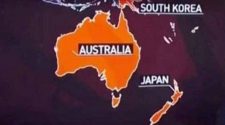
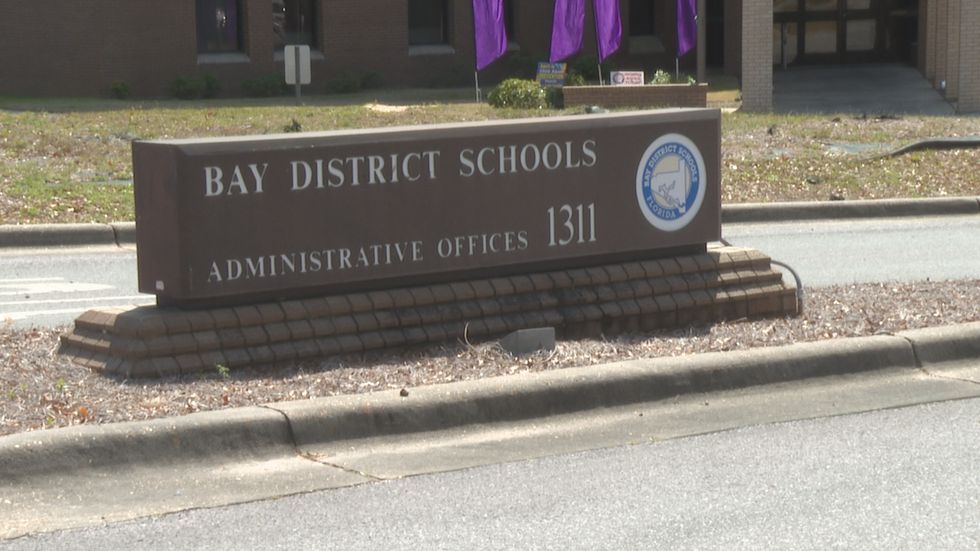
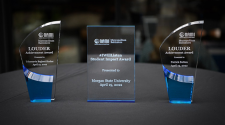
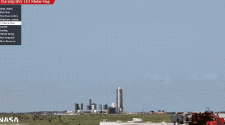






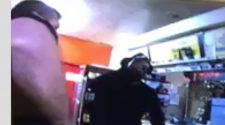
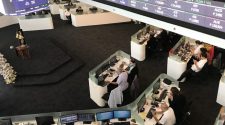

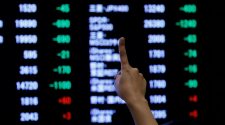



UK Plc might be missing a £100bn trick by not taking technology seriously